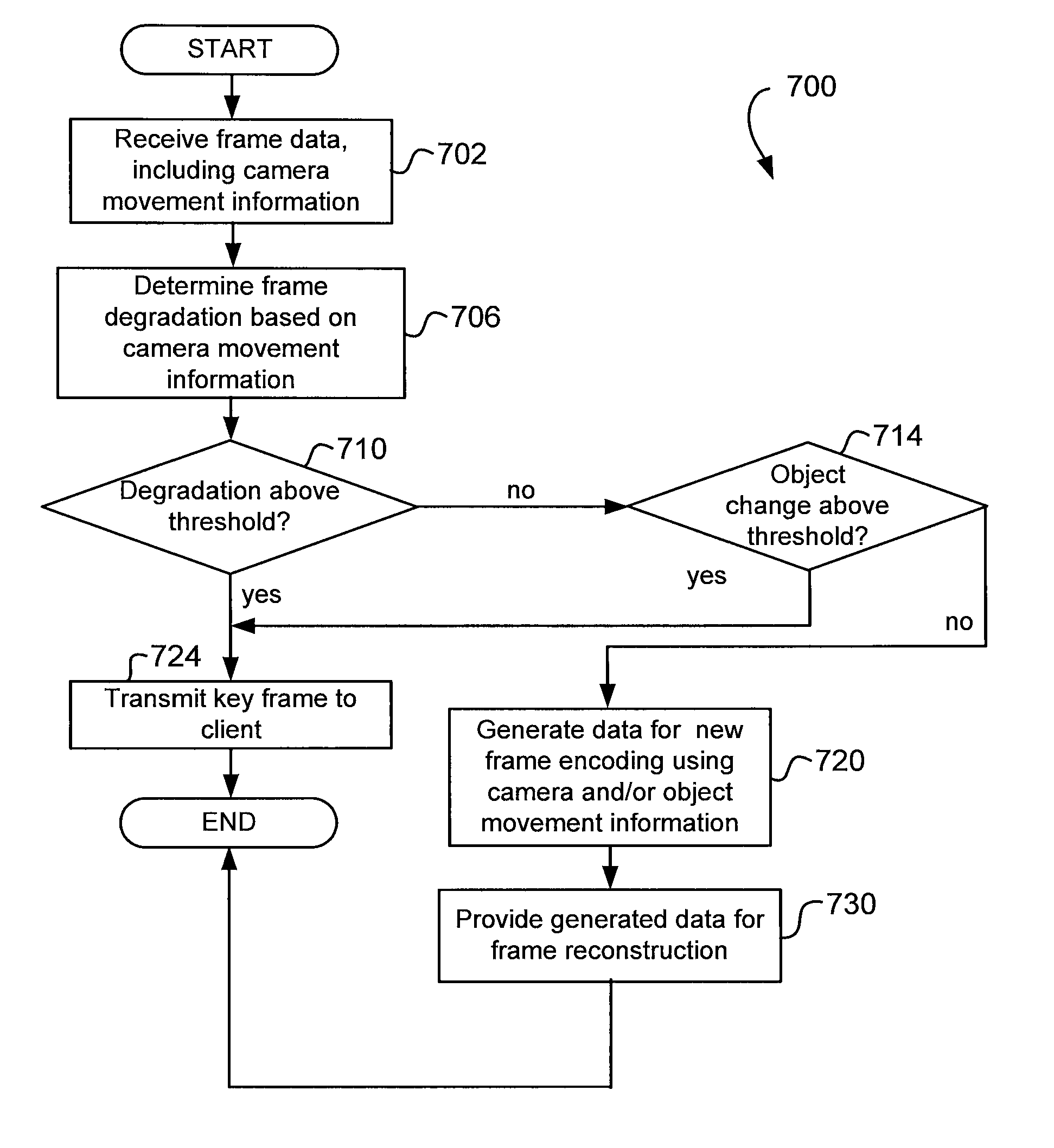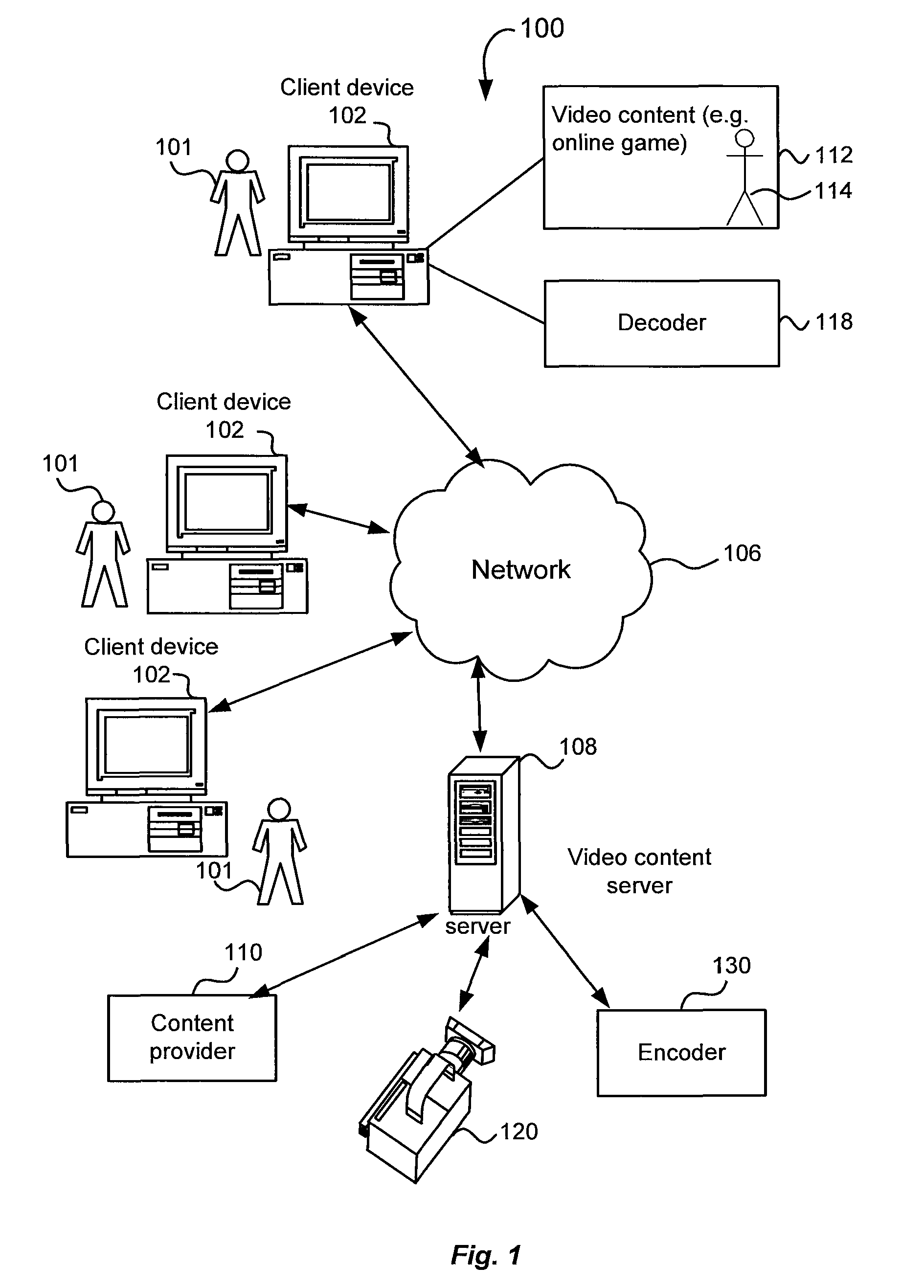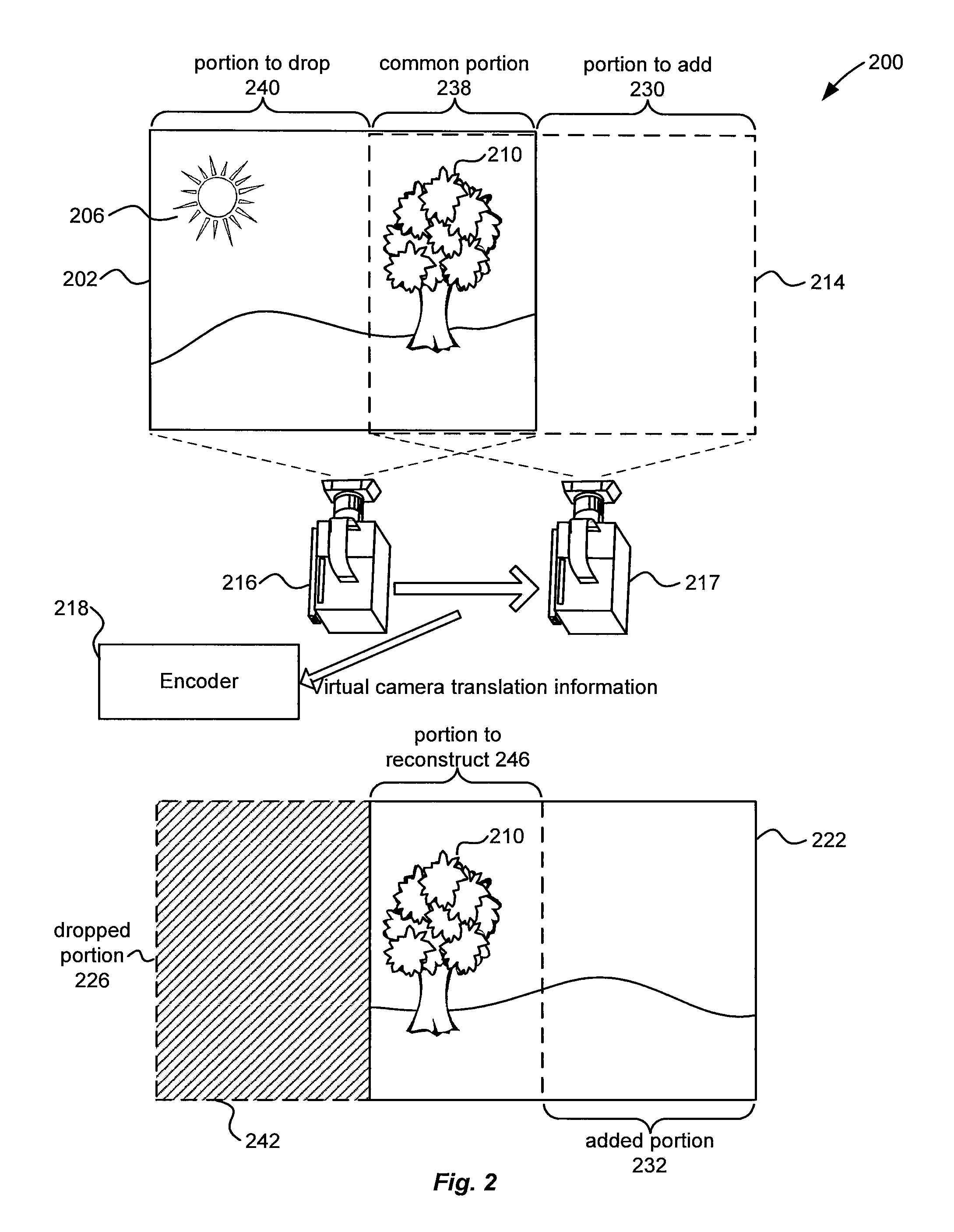Techniques for video data encoding
a video data and encoding technology, applied in the field of video data encoding, can solve the problems of reducing image quality from the current frame to the next frame, and ultimately affecting the quality of video data
- Summary
- Abstract
- Description
- Claims
- Application Information
AI Technical Summary
Benefits of technology
Problems solved by technology
Method used
Image
Examples
Embodiment Construction
[0012]Techniques are described in accordance with various embodiments for the encoding and / or decoding of video data. In various embodiments, video data encoding utilizes information relating to camera movement during a time period between at least a current frame and a next frame. Various techniques further utilize information defining a video content object location in the next frame relative to the object location in the current frame. Such techniques avoid the need for a frame-by-frame comparison as in conventional video encoding techniques, where two adjacent video frames are compared and the determined video data differences, if any, are transmitted to a decoder configured to reconstruct the next frame based on the current frame and the determined differences between the current and the next frames.
[0013]Camera movement information (be it a video camera or “virtual camera”) may be utilized to encode differences between two subsequent frames in order to reconstruct a frame base...
PUM
 Login to View More
Login to View More Abstract
Description
Claims
Application Information
 Login to View More
Login to View More - R&D
- Intellectual Property
- Life Sciences
- Materials
- Tech Scout
- Unparalleled Data Quality
- Higher Quality Content
- 60% Fewer Hallucinations
Browse by: Latest US Patents, China's latest patents, Technical Efficacy Thesaurus, Application Domain, Technology Topic, Popular Technical Reports.
© 2025 PatSnap. All rights reserved.Legal|Privacy policy|Modern Slavery Act Transparency Statement|Sitemap|About US| Contact US: help@patsnap.com



